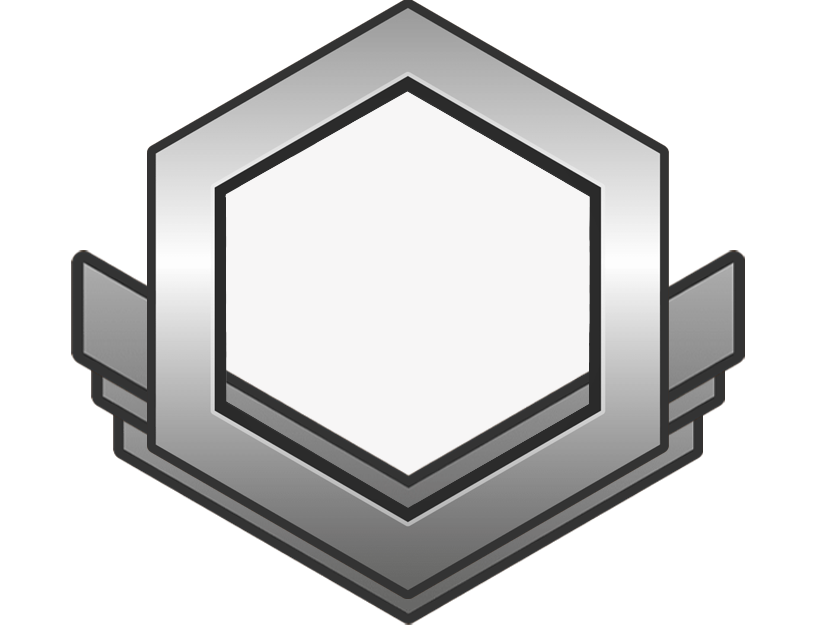

Lê Song Phương
Giới thiệu về bản thân



































Nếu \(n\) chẵn thì đpcm trở thành \(\dfrac{3n+1}{4n-1}\le\dfrac{3n+4}{4n-1}\) \(\Leftrightarrow3n+1\le3n+4\) \(\Leftrightarrow1\le4\), luôn đúng.
Nếu \(n\) lẻ thì đpcm thành \(\dfrac{3n-1}{4n+1}\le\dfrac{3n+4}{4n-1}\)
\(\Leftrightarrow\left(3n-1\right)\left(4n-1\right)\le\left(4n+1\right)\left(3n+4\right)\)
\(\Leftrightarrow12n^2-3n-4n+1\le12n^2+16n+3n+4\)
\(\Leftrightarrow26n+3\ge0\) (luôn đúng)
Vậy với mọi \(n\inℕ^∗\) thì \(\dfrac{3n+\left(-1\right)^n}{4n-\left(-1\right)^n}\le\dfrac{3n+4}{4n-1}\)
Có \(y'=x^2-2mx-1\)
Xét pt \(y'=x^2-2mx-1=0\)(*), có \(\Delta'=m^2+1>0\) nên (*) luôn có 2 nghiệm phân biệt \(x_1,x_2\)
Theo định lý Viète, ta có: \(\left\{{}\begin{matrix}x_1+x_2=2m\\x_1x_2=-1\end{matrix}\right.\)
Để \(x_1^2+x_2^2=2\)
\(\Leftrightarrow\left(x_1+x_2\right)^2-2x_1x_2=2\)
\(\Leftrightarrow\left(2m\right)^2+2=2\)
\(\Leftrightarrow4m^2=0\)
\(\Leftrightarrow m=0\)
Vậy \(m=0\) thỏa mãn ycbt.
\(x^2+5xy+6y^2+x+2y-2=0\)
\(\Leftrightarrow x^2+2xy+3xy+6y^2+x+2y=2\)
\(\Leftrightarrow x\left(x+2y\right)+3y\left(x+2y\right)+\left(x+2y\right)=2\)
\(\Leftrightarrow\left(x+2y\right)\left(x+3y+1\right)=2\)
Ta xét các TH sau:
TH1: \(\left\{{}\begin{matrix}x+2y=1\\x+3y+1=2\end{matrix}\right.\Leftrightarrow\left(x;y\right)=\left(1;0\right)\)
TH2: \(\left\{{}\begin{matrix}x+2y=2\\x+3y+1=1\end{matrix}\right.\Leftrightarrow\left(x;y\right)=\left(6;-2\right)\)
TH3: \(\left\{{}\begin{matrix}x+2y=-1\\x+3y+1=-2\end{matrix}\right.\Leftrightarrow\left(x;y\right)=\left(3;-2\right)\)
TH4: \(\left\{{}\begin{matrix}x+2y=-2\\x+3y+1=-1\end{matrix}\right.\Leftrightarrow\left(x;y\right)=\left(-2;0\right)\)
Vậy có 4 cặp số (x; y) thỏa mãn đề bài là \(\left(1;0\right),\left(6;-2\right),\left(3;-2\right),\left(-2;0\right)\)
Dịch đề: Cho dãy số 2, 7, 12, 17, 22, 27,..., 302, 307. Tìm chữ sồ hàng đơn vị của tích tất cả các số trong dãy.
Solution (in English):
In the sequence, there are \(\left(302-2\right):10+1=31\) numbers that end with 2 and \(\left(307-7\right):10+1=31\) numbers that end with 7.
Therefore, the unit digit of the product is also the unit digit of:
\(A=2\times2\times2\times...\times2\times7\times7\times7\times...\times7\)
(31 numbers 2) (31 numbers 7)
We have to find out what is the final digit of \(2\times2\times...\times2\) (31 times) and \(7\times7\times...\times7\) (31 times)
Consider the number \(N=2\times2\times...\times2\) (\(n\) times)
If \(n=1\), then \(N=2\)
If \(n=2\), then \(N=4\)
If \(n=3\), then \(N=8\)
If \(n=4\), then \(N=16\rightarrow\) the last digit is 6
If \(n=5\), then \(N=32\rightarrow\) the last digit is 2
If \(n=6\), then \(N=64\rightarrow\) the last digit is 4
If \(n=7\), then \(N=128\rightarrow\) the last digit is 8.
If \(n=8\), then \(N=256\rightarrow\) the last digit is 6.
...
From here we can see a pattern: If \(n\) has a remainder of 3 when being divided by 4, the last digit of N is 8. Thus, the final digit of \(2\times2\times...\times2\) (31 times) is 8 since 31 has a remainder of 3 when being divided by 4.
Using the same method of reasoning, we can deduce that \(7\times7\times...\times7\) (31 times) ends with 3.
Therefore, the final digit of A must be the final digit of \(8\times3=24\), which is 4.
So the answer is 4.
Đặt \(P\left(x\right)=x^3+3x^2-x+3^n\)
Nếu \(P\left(x\right)\) có nghiệm hữu tỉ \(x=\dfrac{p}{q}\left(p\inℤ,q\inℕ^∗;\left(p,q\right)=1\right)\) thì \(p|3^n,q|1\Rightarrow q=1\) và \(p=3^k\left(k\le n\right)\)
Vậy \(x=3^k\) sẽ là nghiệm hữu tỉ duy nhất của \(P\left(x\right)\) hay \(P\left(3^k\right)=0\)
\(\Leftrightarrow\left(3^k\right)^3+3.\left(3^k\right)^2-3^k+3^n=0\)
\(\Leftrightarrow3^{3k}+3^{2k+1}-3^k+3^n=0\)
\(\Leftrightarrow3^{2k}+3^{k+1}-1+3^{n-k}=0\)
Ta thấy với \(n>k\) thì \(3^{2k}+3^{k+1}+3^{n-k}⋮3\) và \(0⋮3\) nên từ đây suy ra \(1⋮3\), vô lý.
Với \(n=k\) thì \(3^{2n}+3^{n+1}=0\), vô lý vì \(3^{2n}+3^{n+1}>0\) với \(n\inℕ^∗\)
Vậy \(P\left(x\right)\) không thể có nghiệm hữu tỉ. Do đó, nếu \(x^3+3x^2-x+3=0\) thì \(x\) chỉ có thể là một số vô tỉ. (đpcm)
Đổi \(72km/h=20m/s\)
Gia tốc \(a\) của ô tô đó chính là \(-2\left(m/s\right)\) và vận tốc ban đầu là \(v_0=30\left(m/s\right)\)
Ta có \(v^2-v_0^2=2as\Rightarrow s=\dfrac{v^2-v_0^2}{2a}=\dfrac{400-900}{-4}=125m\)
\(\rightarrow\) Chọn C
d) Kẻ \(CH\perp BD\) tại H
Khi đó dễ thấy tứ giác ABHC là hình chữ nhật
\(\Rightarrow CH=AB\)
Hơn nữa, vì CD và CH lần lượt là đường xiên và đường vuông góc kẻ tử C tới đường thẳng BD
\(\Rightarrow CD\ge CH\)
Dấu "=" xảy ra \(\Leftrightarrow D\equiv H\)
\(\Leftrightarrow BD=AC\)
\(\Leftrightarrow\Delta OAC=\Delta OBD\left(c.g.c\right)\)
\(\Leftrightarrow\widehat{AOC}=\widehat{BOD}\)
\(\Leftrightarrow\widehat{AOM}=\widehat{BOM}\)
\(\Leftrightarrow\) M là điểm chính giữa của cung AB.
Lấy điểm A bất kì nằm trên đường tròn đáy.
Khi đó góc tạo bởi đường sinh và mặt phẳng đáy chính là \(\widehat{SAO}=45^o\)
Do đó \(h=r=\dfrac{a}{\sqrt{2}}\)
\(\Rightarrow S_{xq}=\pi rl=\pi.\dfrac{a}{\sqrt{2}}.a=\dfrac{\pi a^2}{\sqrt{2}}\)
\(S_{tp}=S_{xq}+\pi r^2=\dfrac{\pi a^2}{\sqrt{2}}+\pi\left(\dfrac{a}{\sqrt{2}}\right)^2=\dfrac{\pi a^2\sqrt{2}+\pi a^2}{2}\)
Ta thấy \(100⋮4,100-x⋮4\Rightarrow x⋮4\)
\(18⋮9,90⋮9,18+90+x⋮9\Rightarrow x⋮9\)
Điều này có nghĩa là \(x\in BC\left(9,4\right)=\left\{0,36,72,108,...\right\}\)
Tuy nhiên, vì \(x\le22\) nên \(x=0\) là số tự nhiên x duy nhất thỏa mãn đề bài.

